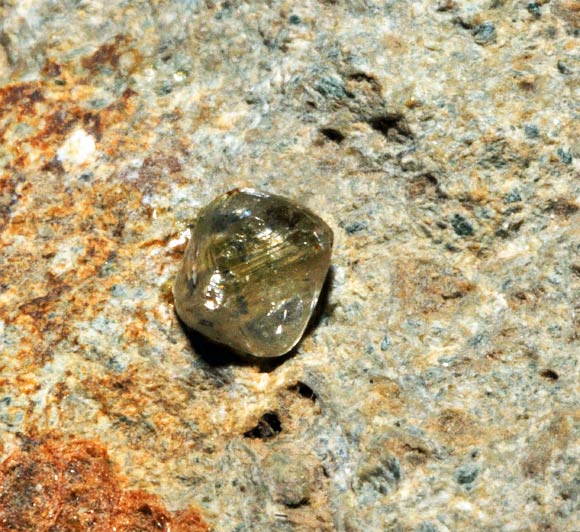The ancient cores of Earth’s continents are called cratons. Shaped like inverted mountains, they can stretch as deep as 200 miles (320 km) through the Earth’s crust and into its mantle; geologists refer to their deepest sections as ‘roots.’ According to new research published in the journal Geochemistry, Geophysics, Geosystems, cratonic roots may contain 1 to 2 vol.% diamond. Considering the total volume of cratonic roots, the study authors figure that about a quadrillion tons of diamond are scattered within these ancient rocks, 90 to 150 miles (145-241 km) below the surface.
“This shows that diamond is not perhaps this exotic mineral, but on the geological scale of things, it’s relatively common,” said Dr. Ulrich Faul, a researcher in the Department of Earth, Atmospheric, and Planetary Sciences at MIT.
“We can’t get at them, but still, there is much more diamond there than we have ever thought before.”
Dr. Faul and colleagues came to their conclusion after puzzling over an anomaly in seismic data.
For the past decades, geological agencies around the world have kept global records of seismic activity — essentially, sound waves traveling through the Earth that are triggered by earthquakes, tsunamis, explosions, and other ground-shaking sources.
Sound waves move at various speeds through the Earth, depending on the temperature, density, and composition of the rocks through which they travel.
Geologists have used this relationship between seismic velocity and rock composition to estimate the types of rocks that make up the Earth’s crust and parts of the upper mantle. However, in using seismic data to map the Earth’s interior, they have been unable to explain a curious anomaly: sound waves tend to speed up significantly when passing through the roots of ancient cratons.
Cratons are known to be colder and less dense than the surrounding mantle, which would in turn yield slightly faster sound waves, but not quite as fast as what has been measured.
“The velocities that are measured are faster than what we think we can reproduce with reasonable assumptions about what is there. Then we have to say, There is a problem. That’s how this project started,” Dr. Faul said.
The researchers aimed to identify the composition of cratonic roots that might explain the spikes in seismic speeds.
To do this, they first used seismic data to generate a 3D model of the velocities of seismic waves traveling through the Earth’s major cratons. Next, they assembled virtual rocks, made from various combinations of minerals.
Then they calculated how fast sound waves would travel through each virtual rock, and found only one type of rock that produced the same velocities as what the seismologists measured: one that contains 1 to 2% diamond, in addition to peridotite (the predominant rock type of the Earth’s upper mantle) and minor amounts of eclogite (representing subducted oceanic crust). This scenario represents at least 1,000 times more diamond than people had previously expected.
“Diamond in many ways is special. One of its special properties is, the sound velocity in diamond is more than twice as fast as in the dominant mineral in upper mantle rocks, olivine,” Dr. Faul said.
The team found that a rock composition of 1 to 2% diamond would be just enough to produce the higher sound velocities that the seismologists measured. This small fraction of diamond would also not change the overall density of a craton, which is naturally less dense than the surrounding mantle.
“They are like pieces of wood, floating on water,” Dr. Faul said.
“Cratons are a tiny bit less dense than their surroundings, so they don’t get subducted back into the Earth but stay floating on the surface. This is how they preserve the oldest rocks.”
“So we found that you just need 1 to 2% diamond for cratons to be stable and not sink.”
_____
Joshua M. Garber et al. Multidisciplinary Constraints on the Abundance of Diamond and Eclogite in the Cratonic Lithosphere. Geochemistry, Geophysics, Geosystems, published online June 19, 2018; doi: 10.1029/2018GC007534








